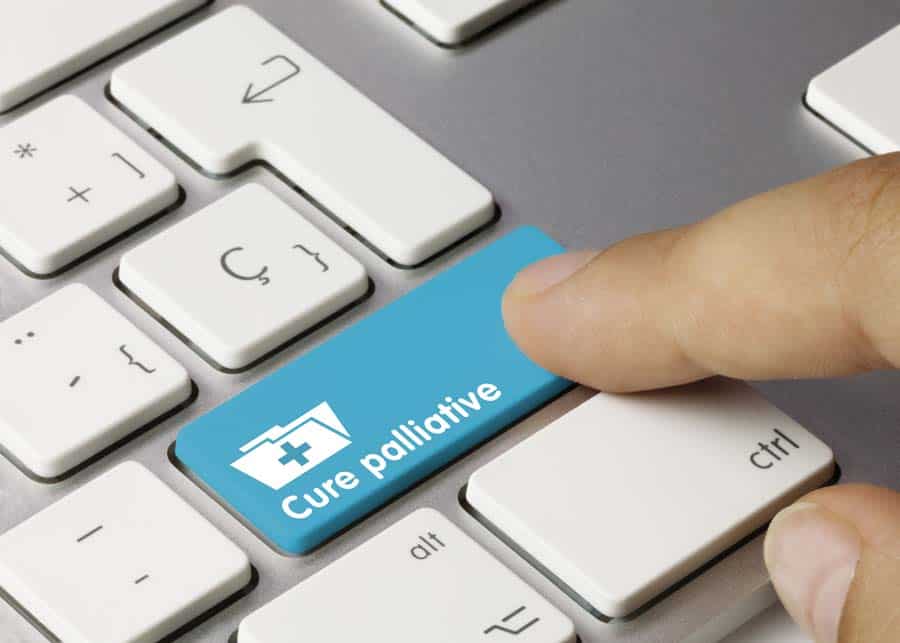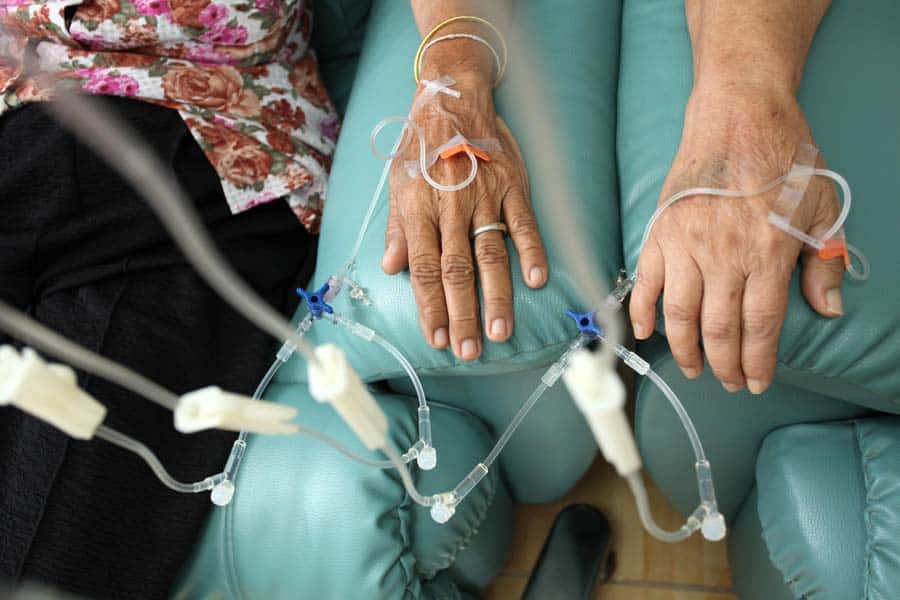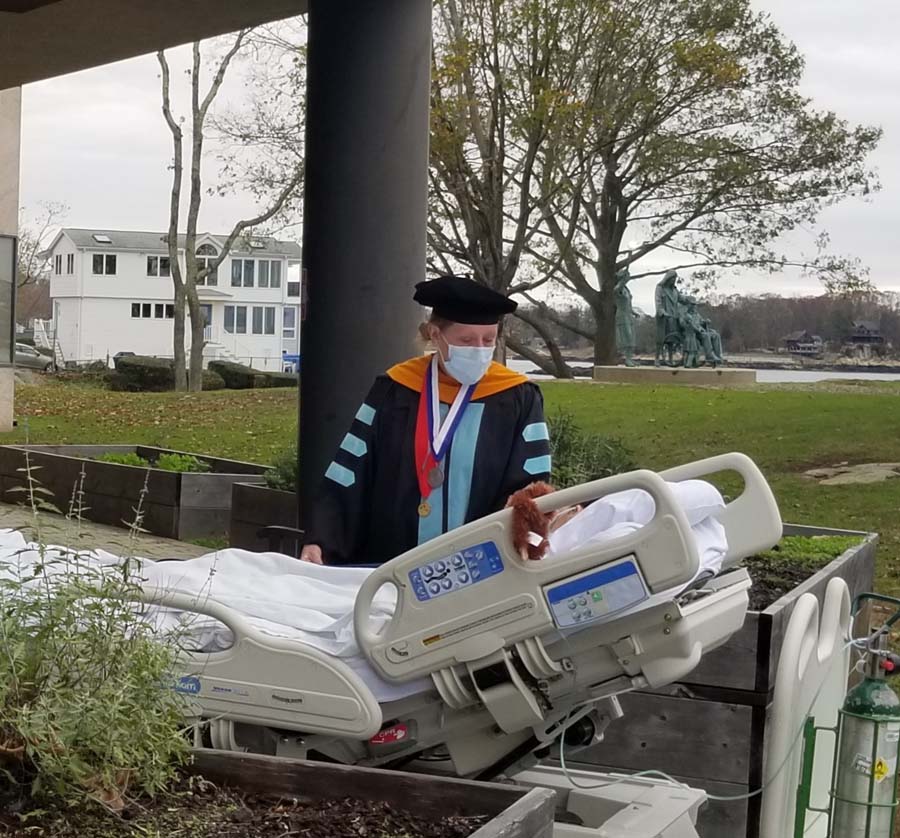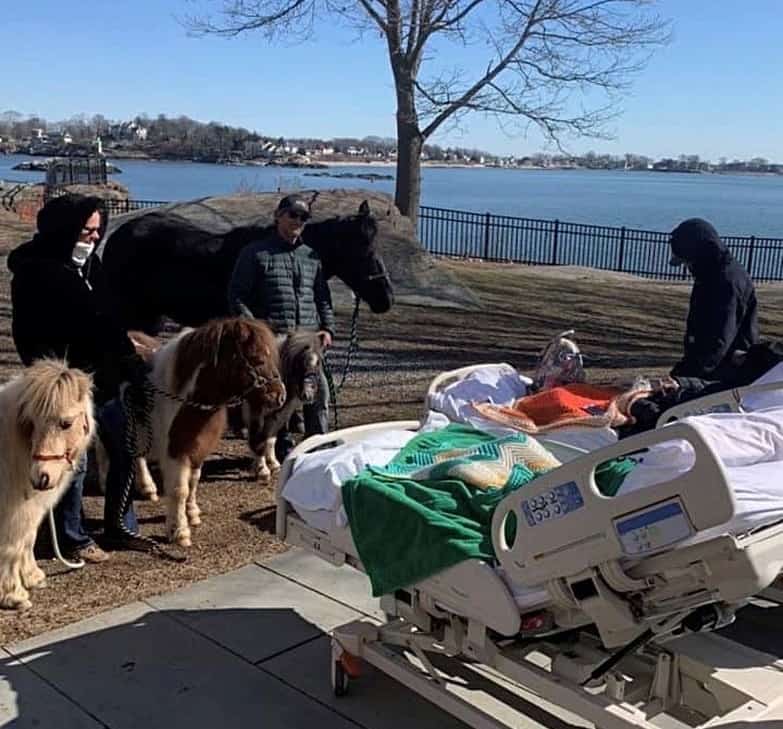Please view our updated COVID-19 guidelines and visiting procedures →.

“Palliative Care is specialized medical care for people with serious illness, focused on providing relief from the symptoms and stress of the illness. The goal is to improve quality of life for the patient and the family. Palliative care is an essential part of the care of anyone with a serious illness, including people who are continuing to be actively treated, and can not only help people get relief from symptoms like pain and shortness of breath, but also help them to better understand their illness and its treatment so they can choose the care that is right for them -- from ongoing active treatment to hospice.
Palliative care is different from hospice care because it is appropriate for people who are seriously ill and are continuing treatment. With exceptions, such as continuing routine medications for problems like high blood pressure or diabetes, people in hospice care are no longer being treated for serious or terminal illness. For example, people in hospice care are not treated with chemotherapy or radiation for cancer, and focus instead on the relief of symptoms.”
Joseph Sacco, Chief Medical Officer, The Connecticut Hospice

The terms “palliative care” and “hospice” are often used interchangeably, confusing patients and families alike. Many hospitals now offer palliative care services to those in pain. Some are in hospice care as well, some are having active treatment for their diseases, and some are only receiving palliative care for pain management.
Those of us in the field are often guilty of this confusion as well. Often, people who are resistant to the term “hospice”, but are past the point of curative care, are referred for palliative care instead, either to a home health agency or to a home hospice agency.
We have traditionally provided both palliative and hospices of care at the Connecticut Hospice, but have found that, almost without exception, the level of services is fairly comparable. For this reason, we have begun limiting the intake of palliative care patients, as we are judged by CMS, (Centers for Medicare & Medicaid Services) by their level of functional improvement.
Since many are at or near the end of life, little progress in the tasks of daily living is achieved, causing us to get very few stars in the government’s rating system. Hence our hesitancy in taking on patients with whom we cannot succeed, by the Federal definition, yet who truly need our help and care. This is a problem that needs addressing, both by the Federal government, and by physicians. Busy doctors are more likely to suggest palliative care, because it doesn’t carry the weighted overtones of “hospice”.

All of this overlap really goes back to the original Medicare definition of hospice eligibility, which was apparently set more or less randomly at six months of life expectancy at the normal disease trajectory. While that may mean very little in the case of an individual, it has become a catchphrase for our industry, depriving those who cannot be certified of important services, and deterring others who are loath to accept an arbitrary six-month prognosis.
Those of us in the hospice line of business believe that it’s past time to change that standard since the evidence is clear that many, if not most, hospice patients have their lives extended with the skilled and compassionate care that hospice workers give. In addition, people in the care of home hospice are frequently able to avoid or minimize time spent in hospitals and urgent care settings, which patients find very taxing and debilitating, without even considering the expense of multiple hospitalizations. If the time frame being discussed were twelve or eighteen months, more patients would likely choose home hospice, and possibly live as long or longer than with aggressive treatment.

The issue of continuing treatment is complicated and also seems to be transitioning. There are many patients who continue to seek treatment for their disease because they can, and, even if it’s a long shot, they don’t want to stop. Since hospice care is considered to be CMO (comfort measures only), and since hospices are required to pay for all treatment and equipment related to the patient’s diagnosis under hospice care rules, this means that we can’t afford to take someone who is undergoing treatment.
Palliative care is compensated at a much lower rate, meaning that caring for a very ill patient continuing treatment, but needing end of life care, doesn’t make financial sense for a home care agency, if that means that they are providing hospice level care, but being paid for routine palliative care. A terminal patient still having treatment is just as sick, or sicker than, a patient receiving comfort measures only, yet the payment for palliative care is far less than for hospice care. In the case of hospice care, even if an exception is made for certain types of treatment, the expense of that treatment puts it out of reach for hospice budgets.
When deciding on care for a loved one, all of these factors can come into play. It’s hard to discontinue treatment from an emotional point of view, even if it is causing side effects (although newer infusion therapies and immunotherapies are much more likely to be tolerated easily). Also, doctors are taught to cure, not to counsel acceptance of death. However, many patients live fuller, and even longer, lives when symptoms are managed and care is compassionate but not meant to be curative.
This is where the confusion of terms comes in: We would consider that symptom management is both hospice care and palliative care. From a home care billing point of view, however, the two are separate, with palliative care used to mean care for a serious illness where improvement is expected, and hospice care used to mean care for the same illness, once the goal of curing the disease has been foregone. To confuse matters further, Palliative care in hospitals can be “comfort measures only”, which is technically hospice care, or pain management. It’s no wonder that families get confused!
The most important starting point is for the patient and his/her support team to have an honest conversation among themselves, and with their treating physicians, about the effectiveness of current and future treatment, a true prognosis for the disease at hand, and the goals for that person’s life trajectory. Some will choose length of life, some will choose quality of life. Sadly, it often happens that assumptions are made, or hard truths are not voiced, so that treatment and care can be working at cross purposes.

If treatment is still desired, a hospitalized patient may still see a palliative care doctor, but the medical team’s efforts are aimed at gaining a cure, or a remission, of the illness. In many cases, this aim means that the patient may have more discomfort, both from the disease and from the treatment. Doctors also can’t know for sure how different people will be able to tolerate, or not, various regimens for treatment. Often, it is not clear early on whether treatment will work, so all of these factors need to be revisited regularly.
When a patient and his/her family come to the decision that comfort care is the way to go, our full attention can be mobilized in that direction. After decades of experience, we have become experts in delivering care whose aim is to fulfill wishes, promote comfort and closure, and relieve pain. Since our goals are less long term, tolerable pain levels are often left to the patient; he/she might choose to remain more lucid, albeit with discomfort, or to be more sedated and have more relief.
It should be clear by now that the patient and family are at the center of this choice, as they should be. All people should be given enough information to make the decisions that are in their own best interests. In fact, that was a primary reason for our founder, Florence Wald, to establish The Connecticut Hospice as the country’s first hospice. She believed passionately that patients and their families needed to be considered as a unit, and that they should be given their diagnoses and prognoses, which wasn’t commonly done fifty years ago. She trusted in the innate wisdom of those at the end of their lives to decide how to spend their remaining days, months, or years, and in the ability of nurses and other medical professionals to help those wishes to come true. And that is as true today at The Connecticut Hospice as it was at our inception.



As a not-for-profit, we depend on generous donors to help us provide customized services and therapies that aren’t completely covered by Medicaid, Medicare, or private insurance.
Please make a gift to help us sustain the highest standard of care.
Admissions may be scheduled seven days a week.
Call our Centralized Intake Department: (203) 315-7540.